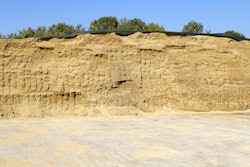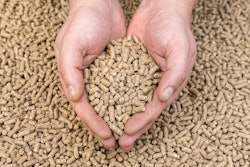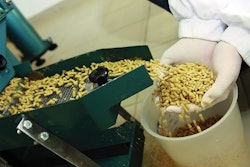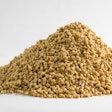
Soybean meal remains a vital ingredient in animal feeds mainly due to its rich protein content at an affordable price. However, the quality of soybean meal can vary based on several factors, one of the major ones being processing methods.
Chemical laboratory tests play a crucial role in determining the protein quality of soybean meal, helping feed producers ensure their products meet the nutritional requirements for various applications. In this blog, we will explore two of the most common laboratory tests used to assess protein quality, with a specific focus on tests for over- and under-processing, such as the KOH test and urase test.
KOH (potassium hydroxide) test
The KOH test is a widely used method for evaluating the extent of overprocessing in soybean meal. Overprocessing can lead to a reduction in protein quality and nutritional value. The test involves treating a sample of soybean meal with a solution of potassium hydroxide (KOH) to measure the amount of protein solubilized.
Procedure:
- Weigh a specific amount of soybean meal.
- Mix the sample with a known concentration of KOH solution.
- Allow the mixture to react, and then filter to separate the soluble and insoluble fractions.
- Measure the protein content in both fractions.
Interpretation:
A higher solubility in KOH indicates overprocessing, as excessive heat or prolonged processing can break down proteins into smaller, more soluble fragments. This breakdown compromises the protein’s nutritional value, as the digestive system may absorb these smaller fragments less efficiently.
Urase test
The urase test is employed to assess the extent of underprocessing in soybean meal. Underprocessing can leave anti-nutritional factors, like urease activity, intact, affecting the meal’s nutritional quality negatively.
Procedure:
- Mix a soybean meal sample with a urea solution.
- Allow the mixture to react, and then measure the remaining urea concentration after a specified time.
- Calculate the urease activity based on the urea degradation.
Interpretation:
Higher urease activity indicates underprocessing, as the enzyme urease remains active in the soybean meal. This can lead to various issues, including decreased protein digestibility and the release of substances like urea, which can be harmful to livestock. Therefore, a lower urease activity is generally desired in soybean meal for optimal nutritional value.
Optimize production processes
The two most common wet chemistry laboratory tests, the KOH test and urase test, remain invaluable tools for evaluating the protein quality of soybean meal. These tests help producers identify over- and underprocessing, allowing them to optimize their production processes and ensure that the soybean meal meets the required nutritional standards. The exact target numbers can differ from country to country and there may be some disagreement among authorities, but establishing a database of these figures for any operation is crucial for evaluating past and future samples of batches received or produced.

















